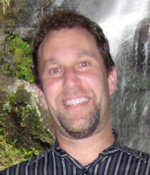Member Spotlight
 Jeffrey Mogil, PhD
Jeffrey Mogil, PhD
TITLE?
INSTITUTION?
Please give us a brief description of your area of specialty and what sparked your interest in your field.
Most of my career has been spent studying the genetic mediation of pain and analgesia. My interest was sparked largely by the fact that just as I was starting graduate school, genetic approaches started becoming tractable, and really no one other than Marshall Devor was working on the genetics of pain. For a while, there was very little interest in what I was doing, but after transgenic knockout mice were developed people started becoming quite interested indeed. I’ve been branching out in recent years, though, with major interests in sex differences in pain, the development of new assays and measures of pain, and in social modulation of pain.
Tell us a little about your session at the APS Annual Scientific Meeting.
I’m going to be talking about my new fascination, the modulation of pain by social factors, and the impact of pain on social interactions. This may sound somewhat old hat, but what’s new is that all this work starts with experiments in laboratory mice. Mice do indeed have social lives! In most cases, we have been able to show that the phenomena we are demonstrating in mice can also be observed in people.
What is the one thing you hope people take away from your session?
The title of my talk is “Mice are People Too.” By this, I mean to impress people not only with the fact that rodents are capable of much more emotion than we give them credit for, but that people may not be qualitatively distinct in many respects from rodents. Our stress, empathy, and prosociality may be more complicated than that of mice, but it might not be fundamentally different after all. I hope that this work will eventually shed light on social modulation of pain in clinical populations.
What do you look forward to the most at APS’s Annual Scientific Meeting?
Ultimately, I look forward to seeing old friends and colleagues and finding out what they’re up to personally and professionally. At this particular meeting, my mother is planning on attending my talk, and I look forward to embarrassing her in front of the audience!
What is the one thing you hope to gain from the APS Annual Scientific Meeting and what impact does it have on your profession?
I’ve found over the years that the real professional reason to go to meetings like the APS Annual Scientific Meeting is to get a broad sense of trends in the field. What are people excited about? What bandwagon is everyone jumping on? What clinical drug development programs may be in trouble? What new technique is some group using that I’ve never heard of?
How has your membership in APS been a value to you and your professional development?
I joined APS as a graduate student, largely because of the influence of my graduate advisor, the late John C. Liebeskind. I’ll never forget two things he told me about APS. The first was that although I’d be more interested in talking to basic scientists, in fact it was more important to talk to the clinicians; I wouldn’t be seeing these people at other meetings (like the Society for Neuroscience), only at APS and the World Pain Congress. The second was that the real action at APS wasn’t in the sessions themselves, but in the hallways outside them; the important thing was to meet people. He was right, of course. Some of my most important scientific conversations and collaborations (e.g., with Roger Fillingim) happened in the hallways of the APS meeting.
Featured in the February 2013 Issue of E-News
